Safer’s Insecticidal Soap Instructions: A Comprehensive Guide
This comprehensive guide provides detailed instructions for using Safer’s Insecticidal Soap, an effective solution for controlling various garden pests․ Learn how to properly mix, apply, and store this OMRI-listed product for optimal results․
What is Safer’s Insecticidal Soap?
Safer’s Insecticidal Soap is a popular and effective solution for controlling soft-bodied insect pests in gardens, landscapes, and greenhouses․ This product is formulated with potassium salts of fatty acids, which are derived from naturally occurring plant oils and animal fats․ Unlike broad-spectrum insecticides, Safer’s Insecticidal Soap is a contact killer, meaning it only affects the insects it directly touches․ This makes it a safer option for beneficial insects that may wander onto the foliage after the soap dries․
Safer’s Insecticidal Soap is OMRI listed, indicating that it is compliant for use in organic gardening․ This means it can be used on a variety of plants, including vegetables, fruits, shrubs, flowers, and trees, up until the day of harvest․ It’s a great tool for managing pest infestations without introducing harsh chemicals into your garden․ However, it’s crucial to follow the instructions carefully to avoid damaging sensitive plants․
Because it’s a contact killer, multiple applications may be needed for full control, especially when dealing with heavy infestations;
Target Pests: What Insects Does it Control?
Safer’s Insecticidal Soap is effective against a wide range of soft-bodied insect pests that commonly infest gardens and landscapes․ Its primary targets include aphids, mealybugs, spider mites, whiteflies, and thrips, all of which can cause significant damage to plants by sucking their sap and weakening their overall health․ The soap is also effective against soft scales, psyllids, rose slugs, earwigs, and elm leafminers․
Aphids, one of the most common garden pests, are easily controlled with Safer’s Insecticidal Soap․ These small, pear-shaped insects can quickly multiply and infest new growth, causing distorted leaves and reduced plant vigor․ Similarly, whiteflies, tiny, winged insects that feed on the undersides of leaves, are effectively managed with regular applications․
Spider mites, though not technically insects, are also highly susceptible to insecticidal soap․ These tiny arachnids can cause extensive damage to plants, leading to yellowing and eventual leaf drop․ Mealybugs, with their characteristic cottony appearance, are another common target․ For pests like spider mites, whiteflies, aphids, and mealybugs, you have to apply the mixture weekly for about 2 to 3 weeks and repeat․
Active Ingredient: Potassium Salts of Fatty Acids
The active ingredient in Safer’s Insecticidal Soap is potassium salts of fatty acids․ This compound, derived from natural fats and oils, is responsible for the product’s insecticidal properties․ Potassium salts of fatty acids are a type of soap that disrupts the insect’s outer protective layer, leading to dehydration and eventual death․ This mode of action makes it a safe and effective option for controlling pests without harming beneficial insects or the environment when used as directed․
Unlike synthetic pesticides, potassium salts of fatty acids have a low toxicity to humans and other mammals․ This is because mammals have biological mechanisms to process and break down fatty acids, making them less susceptible to the harmful effects․ Additionally, potassium salts of fatty acids break down relatively quickly in the environment, minimizing the risk of long-term contamination․
The potassium element in the compound also plays a role in its effectiveness․ Potassium is an essential nutrient for plants, and its presence in the insecticidal soap can provide a slight boost to plant health․
How Safer’s Insecticidal Soap Works: Mode of Action
Safer’s Insecticidal Soap operates through a unique mode of action, primarily targeting soft-bodied insects․ Its effectiveness lies in disrupting the insect’s protective outer layer, known as the cuticle․ This cuticle, typically waxy, serves as a barrier against water loss and environmental stressors․
When Safer’s Insecticidal Soap comes into contact with the insect, the potassium salts of fatty acids penetrate and weaken the cuticle․ This process disrupts the insect’s cell membranes, causing them to become more permeable․ As a result, the insect begins to lose water rapidly, leading to dehydration․
The dehydration process is further accelerated by the soap’s ability to interfere with the insect’s respiratory system․ By disrupting the cell membranes, the soap can block the spiracles, tiny openings through which insects breathe․ This blockage restricts oxygen intake and exacerbates the effects of dehydration․
Ultimately, the combination of cuticle disruption, dehydration, and respiratory interference leads to the insect’s demise․ Safer’s Insecticidal Soap is a contact killer, meaning that it must come into direct contact with the pest to be effective․
Mixing Instructions for Concentrate
To effectively utilize Safer’s Insecticidal Soap Concentrate, proper mixing is crucial․ The general guideline for dilution involves mixing one part of the concentrate with 50 parts of water․ This ratio ensures the solution is potent enough to control pests while remaining safe for plants․
For smaller applications, like using a 10 ml concentrate, mix it with 500 ml of water․ When preparing larger volumes, maintain the 1:50 ratio to achieve the desired concentration․
Always use fresh water when mixing the solution, and soft water is preferable, if available․ The concentrate should be thoroughly mixed with water before application to guarantee uniform coverage․
Use a clean container to avoid contamination that could affect the soap’s efficacy or harm your plants․ Shake the mixture well before and during use to ensure the solution remains consistent․
Prepare only the amount of solution needed for immediate application, as freshly mixed solutions provide the best results․ Store any remaining concentrate in a cool, dry place, away from direct sunlight and extreme temperatures․
Dilution Ratios: Soap to Water
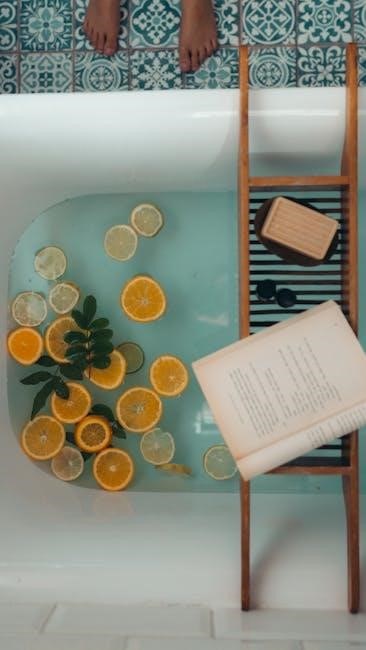
Achieving the correct dilution ratio of Safer’s Insecticidal Soap to water is paramount for effective pest control without harming your plants․ The standard dilution ratio for Safer’s Insecticidal Soap concentrate is typically 1 part soap to 50 parts water․ This ratio ensures the solution is potent enough to tackle soft-bodied insects while minimizing the risk of foliage damage․
For example, if you are using 10 ml of Safer’s Insecticidal Soap concentrate, you would need to mix it with 500 ml of water․ Similarly, for larger quantities, such as 16 fl․ oz․ of concentrate, you would mix it with approximately 6 gallons of water․
Always use clean water, preferably soft water, to avoid any mineral interference with the soap’s efficacy․ Measure both the soap and water accurately to maintain the correct ratio․
Mix the solution thoroughly to ensure the soap is evenly distributed throughout the water․ Preparing the solution fresh each time is recommended for optimal results․ Adhering to the proper dilution ratios guarantees the best possible outcome when using Safer’s Insecticidal Soap․
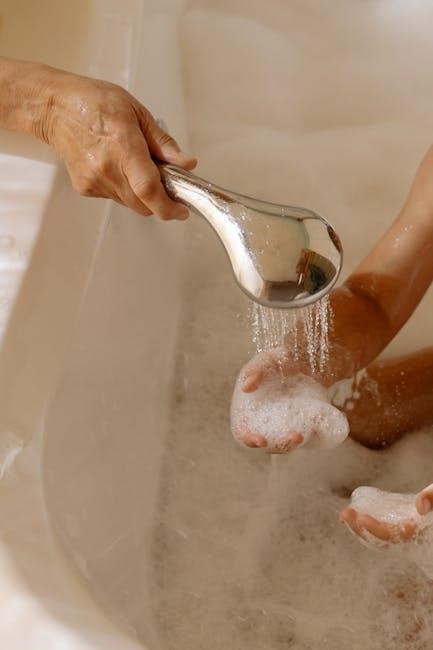
Application Methods: Sprayers and Techniques
Safer’s Insecticidal Soap can be applied using various types of sprayers, including hand sprayers, pump sprayers, and power sprayers․ The choice of sprayer depends on the size of the area to be treated and the severity of the infestation․ Regardless of the sprayer used, always read and carefully follow the manufacturer’s instructions․
Before application, shake the Safer’s Insecticidal Soap solution well to ensure it is properly mixed․ For best results, use a freshly mixed solution․ When spraying, thoroughly wet all surfaces of the infested plants, including both the upper and lower sides of the leaves, as well as stems and branches․
Since Safer’s Insecticidal Soap is a contact killer, it is essential to directly contact the insects for effective control․ Apply the solution in a fine mist to ensure even coverage and minimize runoff․ Avoid spraying during the hottest part of the day or when temperatures exceed 90°F (32°C) to prevent plant damage․ Multiple applications may be needed for full control, especially for heavy infestations․
Where to Use: Suitable Plants and Environments
Safer’s Insecticidal Soap is versatile and can be used on a wide range of plants and in various environments, including indoors and outdoors․ It is safe for use on houseplants, ornamental foliage plants, flowering plants, trees, and shrubs․ You can confidently apply it to protect your vegetable and fruit crops from soft-bodied insects that can damage leaves and reduce yields, even up to the day of harvest․
This insecticidal soap is also suitable for use in organic gardening, as it is OMRI listed and compliant for organic use․ It provides an effective solution for managing pest infestations without the need for toxic chemicals․ Whether you’re dealing with aphids on your roses or whiteflies on your tomatoes, Safer’s Insecticidal Soap can help you control these pests safely and effectively․
However, it’s essential to exercise caution when using Safer’s Insecticidal Soap on new transplants, newly rooted cuttings, or plants stressed by drought․ Avoid application to these plants, as they may be more susceptible to damage․
Frequency of Application: How Often to Apply
The frequency of application for Safer’s Insecticidal Soap depends on the severity of the infestation and the type of pest you are targeting․ As a general guideline, apply the soap every 7 to 10 days when insects are present or as needed to prevent further damage․ For pests like spider mites, whiteflies, aphids, and mealybugs, more frequent applications may be necessary․
In such cases, apply the mixture weekly for about 2 to 3 weeks and repeat as needed․ Regular application helps to control populations of various insects that can harm your plants․ Since Safer Brand Insect Killing Soap is a contact killer, multiple applications may be needed for full control․
Carefully observe your plants for any signs of re-infestation and adjust the frequency of application accordingly․ Remember that insecticidal soap kills only on contact, so thorough coverage is crucial for effective pest control․ Consistent monitoring and timely application will help you keep your plants healthy and pest-free․
When to Apply: Timing and Weather Considerations (Avoid High Temperatures)
Timing is crucial when applying Safer’s Insecticidal Soap to ensure its effectiveness and prevent damage to your plants․ Ideally, apply the soap in the early morning or late evening to avoid the hottest part of the day․ Avoid application when temperatures exceed 90°F (32°C), as high temperatures can cause wilting or browning of the leaves․
Also, do not use these products like watering, as it could cause wilting or browning of the leaves․ Choose a calm day with no rain in the forecast for several hours after application․ This will allow the soap to dry properly and maximize its contact with the targeted pests․
Avoid applying the soap to new transplants, newly rooted cuttings, or plants stressed by drought, as they may be more susceptible to damage․ Remember to consider the growth stage of the plant and weather conditions when determining the best time to apply Safer’s Insecticidal Soap․
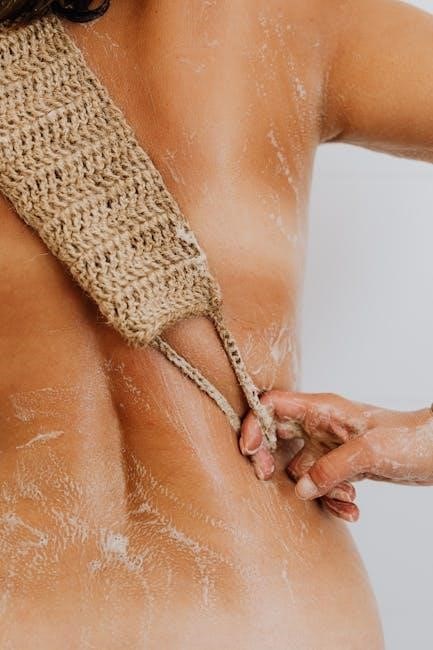
Precautions: Plants to Avoid and Sensitivity Testing
While Safer’s Insecticidal Soap is generally safe for most plants, some species are sensitive to soap-based products․ It is crucial to take precautions and perform sensitivity testing before applying it to your entire garden․ Avoid using Safer’s Insecticidal Soap on euphorbias, gardenias, and delicate ferns, as these plants are known to be sensitive․
Additionally, azaleas and begonias may also exhibit sensitivity, so it is essential to test a small area before widespread use․ To conduct a sensitivity test, apply the diluted soap solution to a small, inconspicuous area of the plant and wait 24 hours to observe any adverse reactions․
If the plant shows signs of wilting, leaf burn, or discoloration, do not apply the soap to the entire plant․ By taking these precautions and conducting sensitivity tests, you can protect your plants from potential damage while effectively controlling pests․ Always read the product label carefully and follow the instructions to minimize the risk of harming sensitive plants․
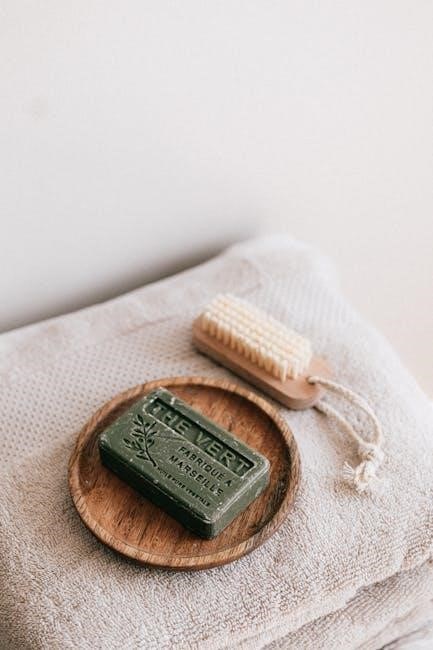
Safety: Use up to Day of Harvest and IPM Programs
Safer’s Insecticidal Soap offers a significant safety advantage as it can be used up to the day of harvest for fruits and vegetables․ This feature allows gardeners to protect their crops from pests without worrying about harmful residues․ The soap’s formulation, based on potassium salts of fatty acids, breaks down quickly in the environment, minimizing any potential impact on beneficial insects or the ecosystem․
Furthermore, Safer’s Insecticidal Soap is a valuable component of Integrated Pest Management (IPM) programs․ IPM emphasizes a holistic approach to pest control, combining various methods to minimize reliance on synthetic pesticides․ By incorporating insecticidal soap into an IPM strategy, gardeners can effectively manage pest populations while promoting a healthy and balanced garden ecosystem․
The soap targets soft-bodied insects upon contact, reducing the risk to beneficial insects that may visit the plants after the application has dried․ Its safety profile and compatibility with IPM principles make Safer’s Insecticidal Soap a preferred choice for environmentally conscious gardeners․
Storage and Disposal
Proper storage and disposal of Safer’s Insecticidal Soap are crucial for maintaining its effectiveness and minimizing environmental impact․ Store the concentrate in its original container, tightly closed, in a cool, dry place away from direct sunlight and extreme temperatures․ Avoid storing it in areas accessible to children or pets․
When disposing of unused concentrate or diluted solution, do not pour it down the drain or into waterways․ Check with your local waste management authorities for specific guidelines on proper disposal methods in your area․ In many cases, you can dispose of small quantities of diluted solution by pouring it onto a non-crop area of your garden where it will not contaminate water sources․
For empty containers, rinse them thoroughly with water before disposing of them in accordance with local regulations․ Recycling the container is often the most environmentally responsible option․ By following these storage and disposal guidelines, you can ensure the safe and effective use of Safer’s Insecticidal Soap while minimizing its potential impact on the environment․
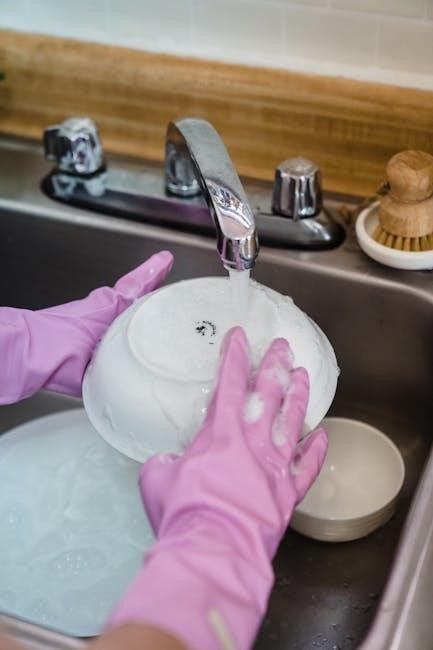
Leave a Reply
You must be logged in to post a comment.